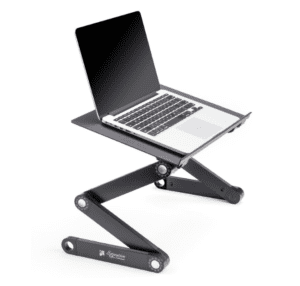Ringing the little changes

Sometimes the symptom that patients presents with can be almost a red herring. Which is where my approach of treating the person as a whole, not necessarily just the symptom, can prove invaluable. Recently, for example, a patient came in with lower back pain. The lower back is influenced by muscle and fascial (connective tissue) chains, both above and below where the symptoms are felt. In this case, the upper back was affecting the lower and the neck was affecting the upper back. But a very simple change to the patient’s pillow brought improvements to the upper back, which in turn improved the lower back. All of which got me thinking about the small changes that can make a big difference.
It’s very easy to get into bad habits when sleeping, working and or at leisure. Usually, we don’t even realise what we’re doing until niggling back or neck pain becomes a constant companion. But there are a few little changes that can be surprisingly effective.
Spotlight on….your pillows
If you frequently wake up with a stiff, sore or painful neck (cervicalgia) or suffer with persistent headaches, your pillow(s) and/or sleeping position could be to blame.
Containing seven of the spine’s 33 vertebrae, your neck has to work hard 24/7. For a start, it supports a head that weighs in at a hefty 4.5-5.5 kilos (10-12lbs) when upright. It gets some relief when you’re horizontal (and hopefully asleep) but it still needs help. Your pillows should retain their shape and offer proper support to keep both head and neck correctly aligned, with your spine in the same position as if you were upright.
But like Goldilocks, you need to be choosy. Beware pillows that are too soft (causing a curvy, floppy neck), while an overly hard one will give you a pain in the neck. Too many pillows cause the spine to curve upwards while those that are too low make the spine curve downwards.
There are many different types of pillows with a wide variety of fillings – synthetic fibres, foams or down and feathers. Also specially moulded neckcare pillows.
How to buy and use pillows
- Avoid sleeping on your stomach – this position twists/strains the neck;
- Test pillows before buying and check labels for quality assurance;
- Choose fillings carefully – some people react badly to down or feathers;
- Replace pillows every two or three years.
When I advised my patient to trade in his thin, worn pillow for a new, supportive one, he was reluctant at first but it made a huge difference. Here’s what he had to say:
“It took about four days to get used to it and I can’t believe the difference it has made to the way I feel when I wake up. My neck and shoulders are now incredibly flexible and free every morning.”
Are you sitting actively?
Do you have a job where you sit down all day? Are you slumped over a computer or laptop? Do you leave the office with tight shoulder muscles and a stiff neck?
If you have answered ‘yes’ to at least one question, Active or Dynamic Sitting – where your seating allows or encourages you to move – could increase your stability and strengthen your core abdominal muscles.
A rocking chair with its back and forth motion is a basic example but, nowadays, there many different seats designed to improve postural health. They work by continually adjusting your body’s movements to engage your core and help you maintain correct posture. These include the ‘Swopper Chair’. I not only highly recommend this, but use it myself. It adapts itself to me, not the other way round, and keeps me moving at all times for optimum health. I’ve mentioned this in a previous blog and you can read about it here.
Laptops – blessing or curse?
Today, most of our working and leisure time is spent slouched in front of a screen of one sort or another.
Laptops are the worst culprits. Unlike most desktops, the laptop screen is lower than eye level and we move our head down and forward so our eyes are optimally positioned. This results in hunching and tight muscles at the front of the neck and chest.
You should always be aware of how you are sitting and moving. It’s also important to review your desk set up and computer use. For extended computer sessions, use a desktop or a place your laptop on a desk. The next step is to raise your screen, using a specially designed and adjustable laptop stand or riser – or even a pile of books under your laptop – so that your eye level is around one third down from the top of the screen. This position moves your head up and back naturally, so you feel more comfortable, less hunched and your chest is more open. If you do buy a laptop riser, think about how portable it is (if you need to take it to work, for example) and how easily you can adjust it to your own requirements. The example below, which is both lightweight and portable, prevents undue neck strain although you would probably need to purchase a second keyboard. Or you could check out this example which is available on Amazon. Finally, if you’d like to explore how we can help you to make those little changes, please get in touch.





